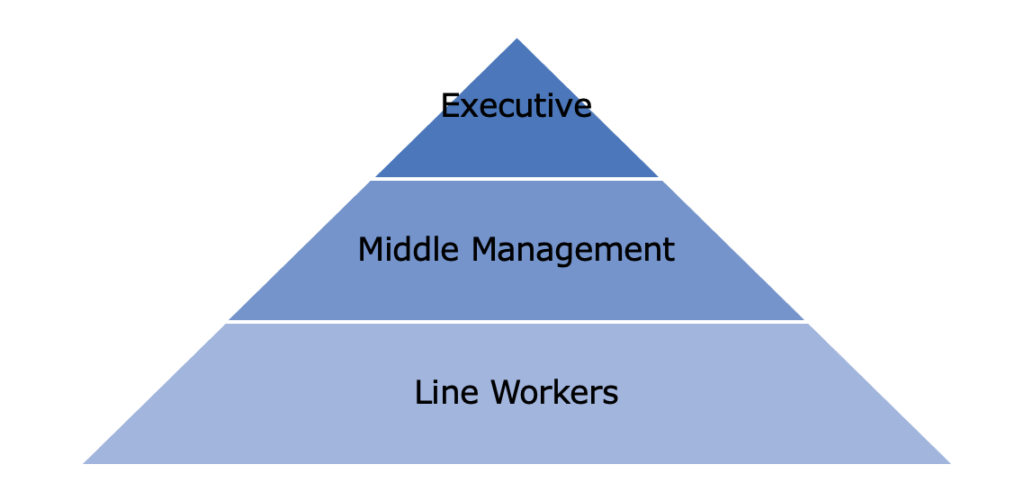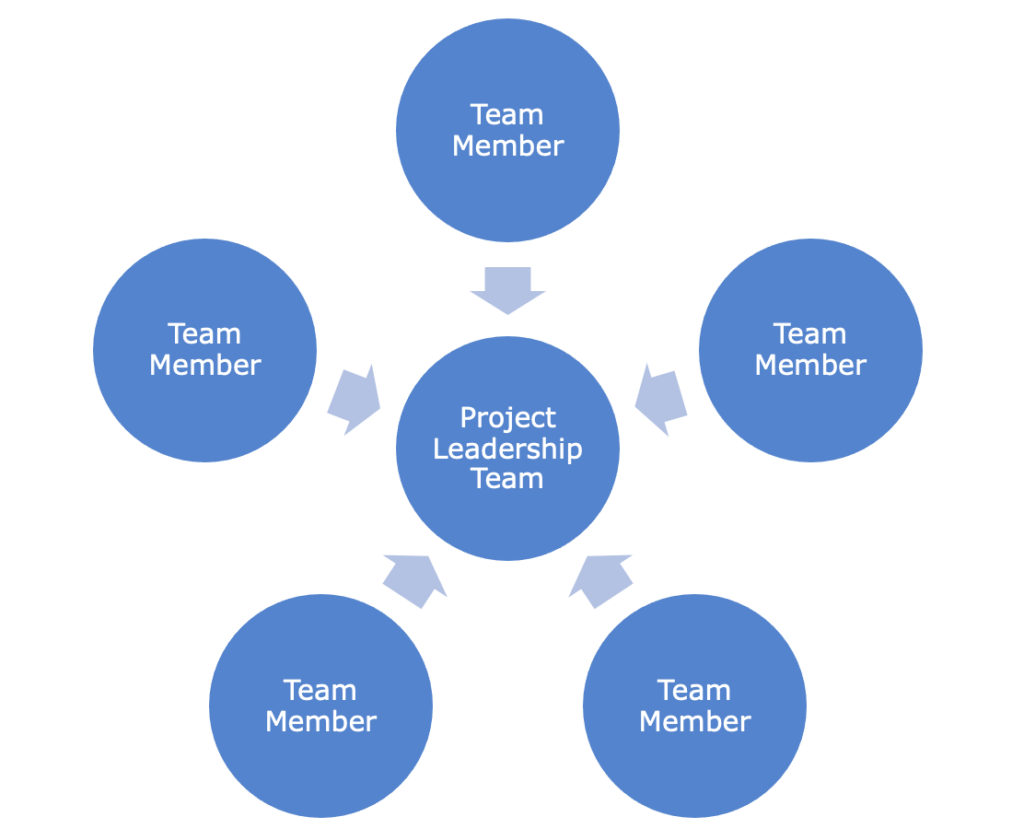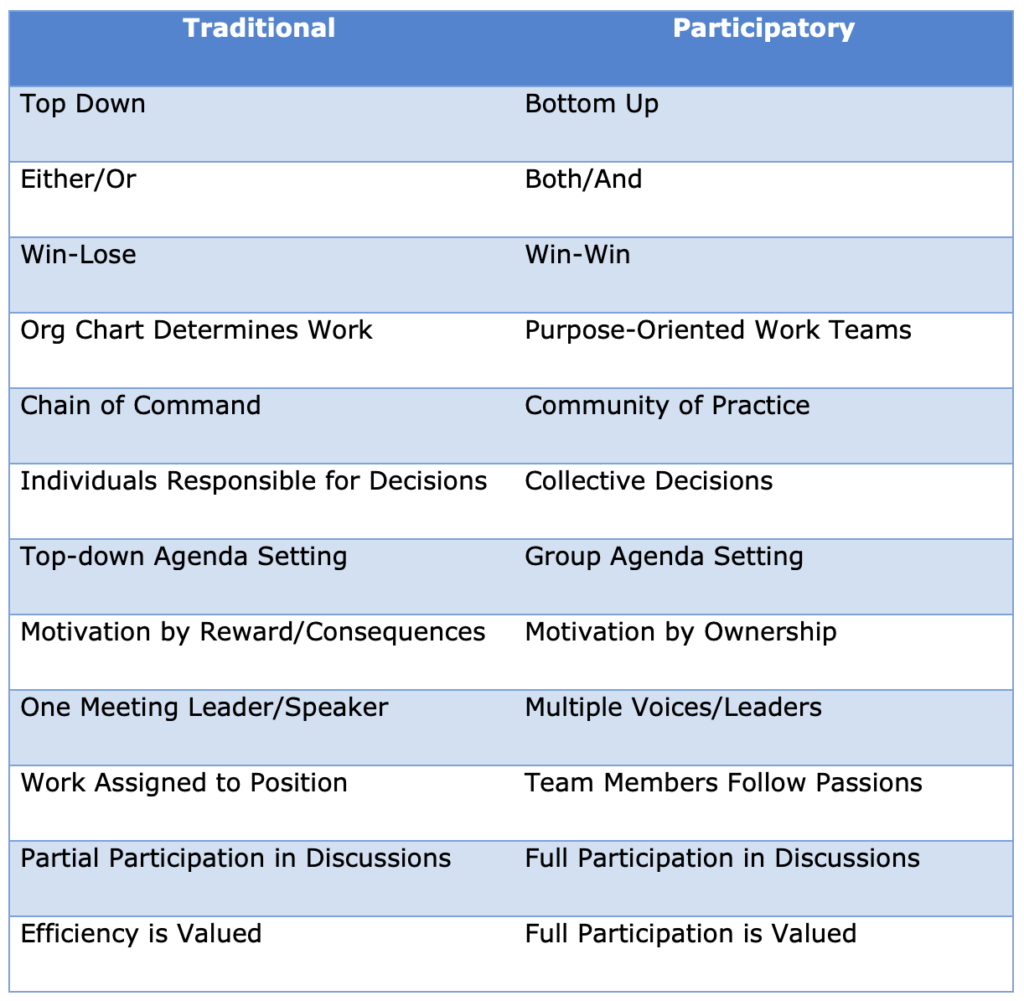Coordinating Volunteers: How to Set the Stage for Leadership Roles
To truly scale their impact, nonprofits must not only focus on coordinating volunteers for general roles. They must also seek to develop volunteers who can lead their peers.
However, it isn’t always easy, especially in today’s world where volunteers, fatigued from the past two years of pandemic life, are reluctant to take on new levels of responsibility.
In this post, we focus on three high-impact management strategies that will help you effectively grow volunteer leadership from within by focusing on key decisions in how you are coordinating volunteers in general.
By coordinating volunteers in ways that make volunteering easier, and more meaningful, you reduce the strain on volunteers and thus make leadership roles more approachable.
Coordinating Volunteers: Participatory vs. Shared Leadership
The first step toward promoting volunteer leadership starts with you and your chosen management style.
While a traditional, hierarchical style of management (sometimes called “command-and-control”) works for some situations (e.g., emergency response efforts) and is required in some contexts (e.g., historically bureaucratic institutions), it is rarely helpful in inspiring and motivating volunteers to lead.
Traditional Leadership Model
In general, volunteers want to participate and have a say in what they carry out and how they go about it. Alternate approaches, therefore, are helpful to consider when planning how to lead volunteers.
One helpful model is that of participatory leadership and decision-making. While the traditional industry leadership model is a triangle with a charismatic leader at the apex, a more innovative, and perhaps more effective, leadership model for the knowledge economy involves a network of people around a circle who filter information from the perimeter and feed it into the middle of the organization for action.
A participatory leadership model assumes that the group has greater wisdom than individuals and accepts that, while this approach make take longer up front, it will save time eventually by increasing morale and productivity and decreasing resistance to change.
Participatory Leadership Model
By building a shared framework of understanding, creating a safe environment for diverse views to be shared, seeking new and untested alternatives and a focus on finding win-win solutions to all problems, teams experience an environment that is both challenging and inspiring.
Making the shift to shared leadership is a paradox, however, because it takes the right kind of leader to make it happen. To share leadership, one must also show strong leadership around letting go. Below are some of the differences in style.
Shared leadership also works better if the workspace reflects a collaborative model. Although staff may not have complete control over their work environment, they can lead the way in making minor changes that support team cohesion.
Here are a few:
- Find Ways to Encourage Play — If teams are relaxed, they are more likely to work together. Celebrate small victories, play music, post funny photos, make communal areas comfortable, give silly prizes or tailor something that works at your organization.
- Create Designated “We” Space — Get rid of the corner office and create a shared space where work can be done communally. Be sure to also have “quiet space” for sensitive conversations and where team members can go to concentrate without distraction. (At the same, time, make sure that confidential documents are kept in locked cabinets and that volunteers have secure, personal storage space while they are on site.)
- Visualize Your Projects — Use whiteboards, walls and flip charts to create shared graphical depictions of your group’s process and decisions. Keep them up during the life of the project to remind the team where you’re headed and how far you’ve come.
- Be Flexible — Not all work has to happen in an office. Encourage volunteers and staff to work remotely and use technology to stay in touch and communicate as the need arises.
For more on shared leadership, see Nonprofit Leadership and Management: How to Modernize Now HERE >>
Coordinating Volunteers: Remote and Hybrid Teams
Shared leadership also extends to virtual or remote work environments, and how nonprofits coordinate volunteers online can also impact the willingness to take on leadership roles.
One of the most essential aspects of supporting an online work environment that works for all is that of trust — team leaders must trust that team members are getting the tasks completed, and team members must trust that the leader has faith in them and won’t second guess their work.
Many assume that because volunteers or paid staff are out-of-sight, they are likely not being productive; however, this rests on the false assumption that because a team member is present in the office, they are automatically working productively.
The fact is that both environments can be efficient or ineffective, depending on the person, the resources they have to work with, and the guidance and support they are provided.
Below are a few suggestions for coordinating volunteers and fostering leadership in a virtual environment (note; these could be equally applicable back at the office):
- Clarify Team and Individual Goals — Make sure that everyone understands the goals and objectives for the project (including deadlines) and how their work contributes to the overall success. Using participatory decision-making, have the team develop and agree upon targets that are achievable and make sense for each individual.
- Highlight the Skills of Each Team Member — Take time to share the talents each person brings to the table with the others to build confidence and reliance on each other as prime resources.
- Allow Time for Interpersonal Sharing — Encourage team members to share something about their personal lives beyond volunteering or work. This helps members find commonalities and knits together trusting relationships with people who find common ground.
- Share & Rotate Leadership — Appoint an overall leader but share leadership for project stages or meetings with individuals who have the most knowledge or information at the current moment.
- Establish Communication Norms — As a group, set up basic guidelines for frequency and types of communication, as well as when and how to alert others about availability. This is particularly important for volunteers who, because of varying schedules, will most often communicate asynchronously. Set up a regular schedule to meet as a team, but also allow the flexibility of informal “just-in-time” interactions between individuals or small groups, both online and on land.
- Meet In-Person, Too — Some team activities are difficult to accomplish without being able to facilitate rapid discussion and read body language. For tasks like strategic project planning, problem-solving and celebrating, bring the team together for an office day.
- Promote Healthy Boundaries — Encourage volunteers to maintain a productive work-life balance and let them know they are NOT expected to check email when they are off duty. Refrain from sending texts to volunteers unless they agree or in the case of an emergency.
- Establish a Code of Conduct — Although volunteers may not be working in your office, when they are on duty, they are representing your organization. Communicate clear standards for confidentiality, volunteer and staff privacy, email, social media communications and ethics. Because some volunteers may be working from home, this needs to be reinforced regularly.
A second element of coordinating volunteers online is, of course, the technology that is used to facilitate communication, resource sharing, and collaboration.
The software you use doesn’t have to be expensive or complicated, but it does need to meet the team’s needs and be easy to navigate with a little training.
Here are a few things to consider:
- Maintain a Shared Calendar — Use Google Calendar or other software to communicate when volunteers will, and will not, be working. Also, send team meeting notices via email that volunteers can download to their personal calendars if they so wish.
- Use Group Video Chatting — Software like Skype and Google MeetUps allow individuals and teams to view each other during meetings. This adds more interest than telephonic calls and allows participants to physically point to sections of documents.
- Use Screen Sharing & Whiteboarding — There are several free and fee-based screen-sharing tools that can be used to share documents and plans in live time. Use them to co-produce plans and brainstorm ideas.
- Set Up Public Emails — Instead of using their private email, ask volunteers to set up a free email address, such as Gmail or Hotmail, so that their identity is protected. This is especially important if they work directly with the public.
- Store Documents Online — Google Drive and Notion are two platforms that allow approved users to post and view shared documents. Be sure to establish a file naming protocol the team will use to keep track of multiple versions and edits over time, as well as final documents. Make sure you store both documents that are in development and your basic assets, like your logo, mission statement, templates, etc. — as well as current team contact info — in one, well-organized place.
- Set Up a Project Management System — Once you have your project plan decided and tasks assigned, have team members add their key milestones and deliverables to the team calendar. If the calendar is integrated into a project management system, all the better. There are several free options you can choose from, and all have integrated file sharing and management, project chat/email communications and a tasks tracker and calendar function.
For more on hybrid volunteer teams, see How to Forge Stronger Bonds with Remote & Hybrid Volunteers HERE >>
Coordinating Volunteers: Developing Tomorrow’s Leaders
Leadership is defined as the ability to organize things within a group to move past the status quo. Leadership is not the same as management— even great management— and organizations need diverse kinds of leaders at distinct stages of their development.
So, what makes an effective volunteer leadership program, and how can you inspire volunteers to participate?
The Society for Human Resource Management identifies the following essential leadership competencies, which are relevant to any organization.
Leading the Organization
- Managing change
- Solving problems and making decisions
- Managing “politics” and influencing others
- Taking risks and innovating
- Setting vision and strategy
- Managing the work
- Enhancing business skills and knowledge
- Understanding and navigating the organization
Leading the Self
- Demonstrating ethics and integrity
- Displaying drive and purpose
- Exhibiting leadership stature
- Increasing your capacity to learn
- Managing yourself
- Increasing self-awareness
- Developing adaptability
Leading Others
- Communicating effectively
- Developing others
- Valuing diversity and difference
- Building and maintaining relationships
- Managing effective teams and work groups
In the volunteer context of your program, some may be more critical than others. However, this list can be useful to cultivating volunteer leadership in many ways.
It can be used to 1.) identify priority volunteer leadership competencies to train and support; 2.) assess whether an individual has the necessary base skills to lead a project; or 3.) use as a baseline to craft an individualized development plan.
For more on hybrid volunteer teams, see All You Need to Know for Successful Volunteer Leadership Development HERE >>
While the thought of developing in-house training for volunteer leaders for each of these competencies may feel overwhelming, there are plenty of other alternatives.
Here are a few ways to develop leaders, while coordinating volunteers, that don’t require a large budget and expert training.
These activities allow volunteers to develop their leadership skills incrementally, making them more likely to accept a needed leadership role when it comes about.
- Give Volunteers the Opportunity to Form Their Own Teams — Ask them to tackle special projects they identify and run on behalf of the organization, in addition to their regular volunteer assignment.
- Provide the Infrastructure — If volunteer leaders have opted to take on a challenging project (e.g., recruitment of other volunteers), make sure you provide some of the tools they need to get started such as a project road map or project plan template. These guidelines will provide them just enough guidance to develop a plan but not so much that it stifles creativity.
- Offer “Developmental Assignments” — Identify specific areas of interest for individual volunteers that have a leadership component. Assign volunteers a special assignment that allows them to research and learn while doing. Accept that the project may take a little longer than anticipated and plan for it.
- Partner with Employee Volunteer Programs — Develop a leadership development program, in partnership with a local company, to train volunteer teams (of employee and non-employee volunteers) to spearhead challenging special projects at your organization while, at the same time, growing their skills to lead.
- Partner with State Agencies and Local Corporations — Organizations such as the Pennsylvania Department of Human Resources offer courses on leadership. Look for ways to collaborate and offer these free, or at reduced cost, for volunteer leaders.
- Invite Volunteer Leaders to Staff Development Activities — In-service trainings and local conferences related to leadership development or nonprofit program management are interesting environments for volunteers to learn your business from the inside out.
- Create a Leadership Learning Circle — Set up an online group or community where volunteer leaders can ask questions and share ideas. Regularly “seed” the chat with inspiring resources, such as TED talks and Harvard Business Review blog posts, and topics related to leadership.
- Share What Works — Ask volunteer leaders to collect best practices that are innovative, sustainable, able to be replicated and have truly made a difference. If you start by looking for volunteers who have a certain “knack” for something, you will discover that they are likely using a procedure or tactic that works that they may, or may not, recognize as a best practice.
- Match Volunteer Leaders with a Coach — Although volunteer teams may like to work independently, they also need easy access to a coach with whom they can have a mutually respectful, trusting and honest relationship. The job of the coach is not to provide easy answers; rather it is to offer suggestions and access to resources, as well as to pose strategic questions that promote critical thinking and reflection.
As you can see, choosing how you go about cultivating volunteers can be just as important or impactful as a formal volunteer leadership development process.
With purposeful management, shared leadership, helpful tools, and an inspired growth mindset, you can set the stage for volunteer leaders to emerge from your current team without forcing it and in a way that feels organic and part of your natural evolution.
Boost Your Volunteer Leadership: Subscribe to the Volunteer Nation Podcast!
Our new podcast is here, with new episodes every week. Subscribe now via your favorite podcast platform and get new tips and inspiration on how to build, grow, and scale volunteer involvement at your nonprofit.
I’ll be sharing secret BONUS episodes you won’t get unless you are subscribed. So, subscribe now!
Get ProNews: Our Free Weekly Resources Roundup
If you’d like to keep up to date on when the blog post drops and when other fresh content is posted, subscribe to our weekly ProNews newsletter below for a quick digest of what’s up.

















